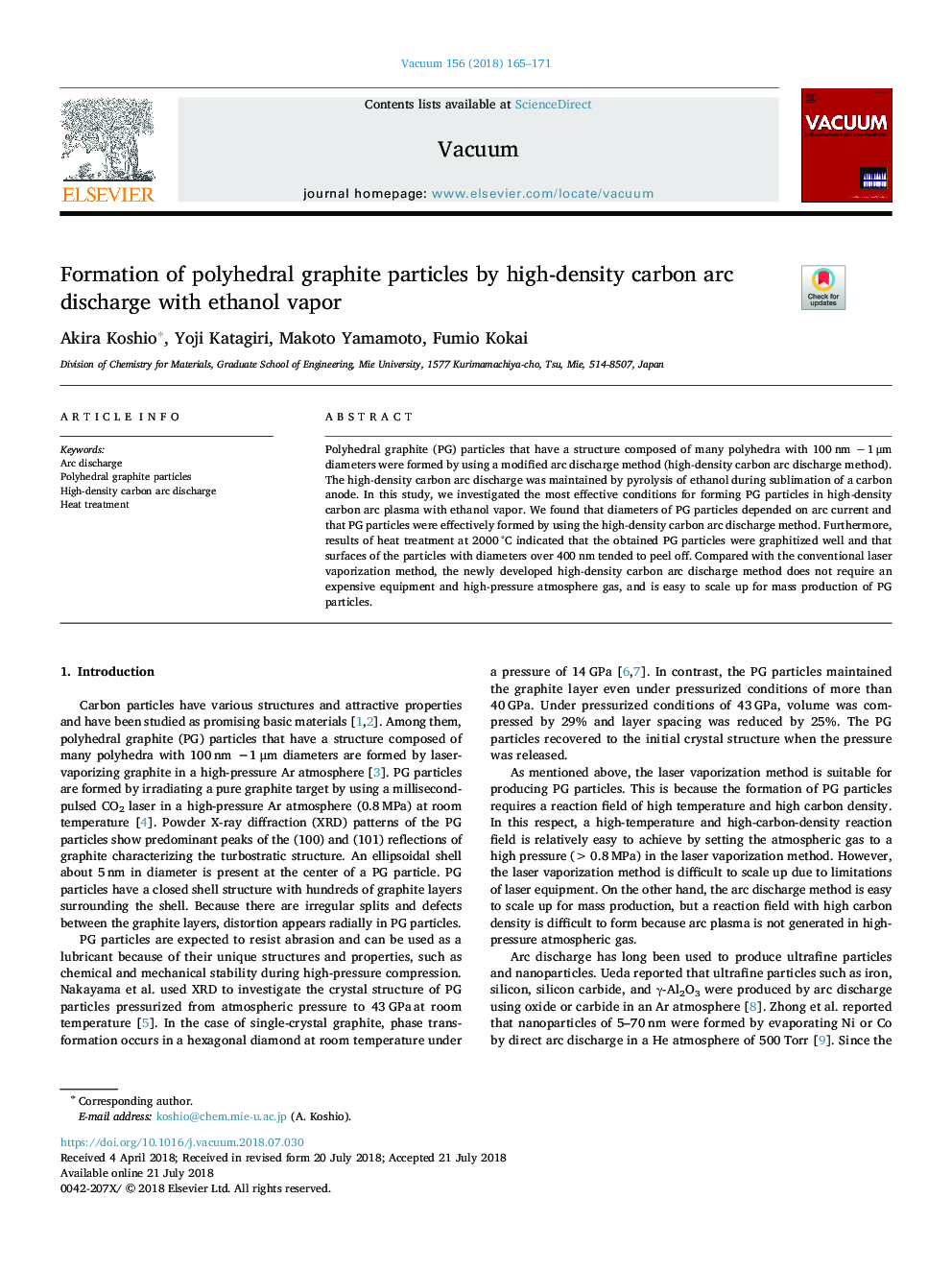| Article ID | Journal | Published Year | Pages | File Type |
|---|---|---|---|---|
| 8044006 | Vacuum | 2018 | 7 Pages |
Abstract
Polyhedral graphite (PG) particles that have a structure composed of many polyhedra with 100â¯nm â1â¯Î¼m diameters were formed by using a modified arc discharge method (high-density carbon arc discharge method). The high-density carbon arc discharge was maintained by pyrolysis of ethanol during sublimation of a carbon anode. In this study, we investigated the most effective conditions for forming PG particles in high-density carbon arc plasma with ethanol vapor. We found that diameters of PG particles depended on arc current and that PG particles were effectively formed by using the high-density carbon arc discharge method. Furthermore, results of heat treatment at 2000â¯Â°C indicated that the obtained PG particles were graphitized well and that surfaces of the particles with diameters over 400â¯nm tended to peel off. Compared with the conventional laser vaporization method, the newly developed high-density carbon arc discharge method does not require an expensive equipment and high-pressure atmosphere gas, and is easy to scale up for mass production of PG particles.
Keywords
Related Topics
Physical Sciences and Engineering
Materials Science
Surfaces, Coatings and Films
Authors
Akira Koshio, Yoji Katagiri, Makoto Yamamoto, Fumio Kokai,
